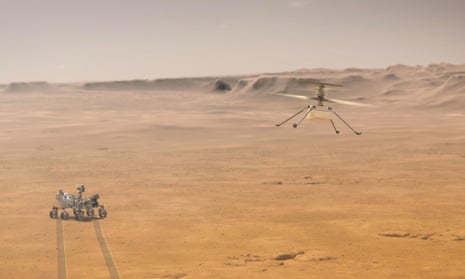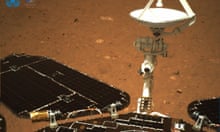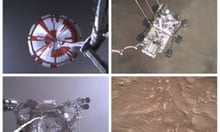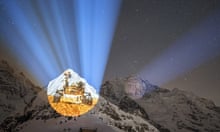Nasa is gearing up to attempt the first controlled flight on another planet next week, with the tiny Ingenuity helicopter on Mars.
The helicopter is expected to take to the skies next week, with Wednesday being the earliest time scheduled.
Ingenuity arrived at the Jezero Crater on the red planet on 18 February after an eight-month journey spanning nearly 300 million miles inside the Perseverance rover.
Take-off had been scheduled for Monday, but Nasa said this was delayed after a technical issue during a rotor test, which means another test is now needed prior to the launch.
The helicopter is 50cm tall and weighs 1.8kg on Earth, but, due to the red planet’s lower gravity, a mere 680g on Mars, according to Nasa’s Jet Propulsion Laboratory. It is armed with two rotors that spin in opposite directions to lift the drone off the ground.
“During a high-speed spin test of the rotors on Friday, the command sequence controlling the test ended early due to a ‘watchdog’ timer expiration,” Nasa said.
“This occurred as it was trying to transition the flight computer from ‘Pre-Flight’ to ‘Flight’ mode. The helicopter is safe and healthy and communicated its full telemetry set to Earth.
“The watchdog timer oversees the command sequence and alerts the system to any potential issues. It helps the system stay safe by not proceeding if an issue is observed and worked as planned.”
After the spacecraft landed, it dropped the drone on to the ground so the aircraft could prepare for its maiden flight. It is part of a technology demonstration: a project that aims to test a new capability for the first time. As such, it does not have any scientific instruments onboard.
According to Nasa, one of Ingenuity’s key objectives is to survive the “bone-chilling temperatures” of the planet with “nights as cold as minus 90C”. It also faces the challenge of flying in Mars’s thin atmosphere, which Nasa notes is less than 1% the density of Earth’s.
For its first flight, the helicopter will take off from the ground and hover in the air at about 3 metres for 20 to 30 seconds before descending and touching back down on the Martian surface.
If successful, Nasa says it will be a “major milestone” – the very first powered flight in another world.
The aircraft will then attempt additional experimental flights, which will involve travelling further distances and increasing altitudes.
It is designed to be mostly autonomous so Nasa will not be able to control the helicopter remotely due to the distance between Earth and Mars. It takes more than 11 minutes to get a radio signal back to Earth.
Last month the Perseverance rover sent back the first ever sounds of driving on the red planet – a grinding, clanking and banging noise.








